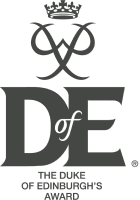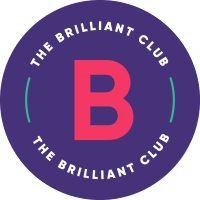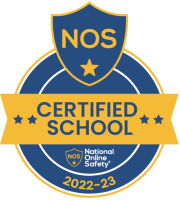This subject is part of the Faculty of Mathematics, Enterprise and Computing
Our Head of Faculty is
Mr J Pridden jpridden@tcat.school
Our subject teachers and emails are
Mrs A Davies adavies@tcat.school
Miss B Godsall bgodsall@tcat.school
Mr I Gateley igateley@tcat.school
Mr J Pridden jpridden@tcat.school
Mr D Racic dracic@tcat.school
Mrs M Watkiss mwatkiss@tcat.school
Our subject intent
Is to deliver an ambitious maths curriculum to all pupils which prepares them for the next stage in their learning and life, whether that be achieving an apprenticeship in a local company or to continue to study mathematics at further or higher education level.
Curriculum Subject Offer
Year 7 Maths
Subject intent
During Key Stage 3 (Years 7 and 8), the aim is to secure and tackle misconceptions in prior mathematical learning which has taken place at Key Stage 2, as well as extending the students mathematical knowledge to develop key elements needed to build sound foundations for Key Stage 4.
During Year 7 you will develop your conceptual understanding, mathematical thinking and problem-solving skills in all areas of mathematics.
Topic Breakdown
| Half term 1 | Half term 2 | |
| Autumn |
|
|
| Spring |
|
|
| Summer |
|
|
You will be assessed at the end of every half term by a formal assessment.
Mathematics full Scheme of Work - Year 7
Year 8 Maths
Subject intent
During Key Stage 3 (years 7 and 8), the aim is to secure and tackle misconceptions in prior mathematical learning which has taken place at Key Stage 2, as well as extending the students mathematical knowledge to develop key elements needed to build sound foundations for Key Stage 4.
In Year 7 you will have developed your conceptual understanding, mathematical thinking and problem-solving skills in all areas of mathematics.
During Year 8 you will revisit many of the topics covered in Year 7 to deepening your understanding of skills learnt and to become fluent in the fundamentals of mathematics so that you can develop the ability to recall and apply knowledge rapidly and accurately when required.
Topic Breakdown
| Half term 1 | Half term 2 | |
| Autumn |
|
|
| Spring |
|
|
| Summer |
|
|
You will be assessed at the end of every half term by a formal assessment.
Mathematics full Scheme of Work - Year 8
Year 9 Maths
Subject intent
During key stage 4 students are set by ability enabling them to improve their understanding and knowledge, therefore allowing them to develop methods and procedures which can be adapted to a variety of situations, and encourages them to tackle mathematical problems with confidence.
In years 7 and 8 you will have developed your conceptual understanding, mathematical thinking and problem-solving skills in all areas of mathematics and have become more fluent in the fundamentals of mathematics so that you can recall and apply knowledge when required.
During Year 9 you will begin your GCSE in Mathematics and will follow either the higher or foundation tier. You will build upon and deepen the knowledge you gained during years 7 and 8. Sets 1 and 2 follow the higher tier scheme of work and set 3 follow the foundation tier.
Topic Breakdown
Foundation
|
Half term 1 |
Half term 2 |
|
|
Autumn |
|
|
|
Spring |
|
|
| Summer |
|
|
Higher
|
Half term 1 |
Half term 2 |
|
|
Autumn |
|
|
|
Spring |
|
|
|
Summer |
|
|
You will be assessed at the end of every half term by a formal assessment
Mathematics full Scheme of Work - Year 9
Year 10 Maths
Subject intent
During key stage 4 students are set by ability enabling them to improve their understanding and knowledge, therefore allowing them to develop methods and procedures which can be adapted to a variety of situations, and encourages them to tackle mathematical problems with confidence.
During Year 9 you began your GCSE in Mathematics by following either, the higher or foundation tier. You will have built upon and deepened the knowledge you gained during years 7 and 8.
During Year 10 you will continue with the 3-year scheme of work started in year 9, covering all areas of the mathematics syllabus. Throughout year 10, set 2 are monitored and a decision is made as to which tier is appropriate for their ability. If you are in set 1 you will also begin GCSE Statistics, hence the scheme of work for higher is different for sets 1 and 2.
Topic Breakdown
Foundation
Higher ~ Set 1
|
Half term 1 |
Half term 2 |
|
|
Autumn |
|
|
|
Spring |
|
|
|
Summer |
|
|
Higher ~ Set 2
|
Half term 1 |
Half term 2 |
|
|
Autumn |
|
|
|
Spring |
|
|
|
Summer |
|
|
Foundation
|
|
Half term 1 |
Half term 2 |
|
Autumn |
|
|
|
Spring |
|
|
|
Summer |
|
|
You will be assessed at the end of every half term by a formal assessment
Mathematics full Scheme of Work - Year 10
Year 11 Maths
Subject intent
During key stage 4 students are set by ability enabling them to improve their understanding and knowledge, therefore allowing them to develop methods and procedures which can be adapted to a variety of situations, and encourages them to tackle mathematical problems with confidence.
During Year 10 you continued with the 3-year scheme of work, covering all areas of the mathematics syllabus. Set 1 will have also began GCSE Statistics.
During Year 11 foundation students will either complete the set 3-year scheme of work or follow a 1-year revision plan as set out by the exam board. Your class teacher will base this decision on the classes performance throughout year 10. Higher students will continue with the set 3-year scheme of work, with set 1 continuing with GCSE Statitics.
Topic Breakdown
Higher Set 1
|
|
Half term 1 |
Half term 2 |
|
Autumn |
|
|
|
Spring |
|
|
|
Summer |
|
|
Higher Set 2
|
Half term 1 |
Half term 2 |
|
|
Autumn |
|
|
|
Spring |
|
|
|
Summer |
Foundation (3 year Sow)
|
|
Half term 1 |
Half term 2 |
|
Autumn |
Volume
Direct and inverse proportion Algebra and graphs |
Inequalities
Trigonometry Graph sketching |
|
Spring |
Solving quadratic equations
Vectors Growth and decay |
Quadratic graphs
Revision |
|
Summer |
Revision |
Foundation (1 year revision)
|
|
Half term 1 |
Half term 2 |
|
Autumn |
Fractions, decimals and percentages
Ratio: Estimating with rounding Conversions and exchange rates. Negative numbers Nth term & prime factorisation Angle rules, triangles, interior and exterior angles |
Polygons, 2D & 3D shapes, symmetry & circles
Pythagoras’ theorem and trigonometry Area and volume Introduction to algebra Perimeter, scales and averages Mode, charts and graphs |
|
Spring |
Trigonometry
Bearings, area and circumference of a circle Inequalities, indices, similar and congruent shapes Rotation, Reflection, enlargement and translation Surface area and area of compound shapes |
Standard form, Loci and construction
Distance time graphs, Scatter graphs & straight-line graphs Volume of a prism & Venn diagrams Probability, relative frequency & proportion Systematic listing, and more probability |
|
Summer |
Percentages, simple and compound interest
Frequency tables, averages and further algebra Expanding and factorising expressions |
You will be assessed at the end of every half term by a formal assessment
Mathematics full Scheme of Work - Year 11
Within each subject we have our own specific personalised marking and feeback policy.
|
Faculty: Maths and ICT |
|||
|
|
KS3 ~ Maths |
KS4 ~ Maths |
ICT |
|
Verbal dialogue |
Teachers circulate with purpose, checking students’ work, marking if appropriate and collecting information on whole-class strengths, errors, misconceptions, knowledge gaps etc. The teacher adjusts their lesson accordingly. |
Teachers circulate with purpose, checking students’ work, marking if appropriate and collecting information on whole-class strengths, errors, misconceptions, knowledge gaps etc. The teacher adjusts their lesson accordingly. |
Teachers circulate with purpose, checking students’ work, marking if appropriate and collecting information on whole-class strengths, errors, misconceptions, knowledge gaps etc. The teacher adjusts their lesson accordingly. |
|
Self/peer assessment |
During lessons, students mark their own work, by either the class teacher reading out the answer or using the answers in the back of the text books. Students provide written feedback through strengths/targets and annotations, as appropriate (not needed every lesson). Peer and self-assessment should be completed in blue pen. |
During lessons, students mark their own work, by either the class teacher reading out the answer or using the answers in the back of the text books. Students provide written feedback through strengths/targets and annotations, as appropriate (not needed every lesson). Peer and self-assessment should be completed in blue pen. |
During lessons pupils will review their own and peers work to make relevant points on how to improve their work. Students provide written feedback through strengths/targets and annotations, as appropriate (not needed every lesson). Peer and self-assessment should be completed in blue pen. |
|
Whole Class Feedback |
When students have completed a unit of work, books will be collected in and the class teacher will look through the work covered during that topic and make notes on the students’ strengths and areas for development. Teachers are not expected to make any comments in the student’s books. Teachers will then use this information to provide whole class feedback on what students are doing well and how students can improve their work further. This will be delivered to the whole class at the start of the next lesson. Evidence of whole class feedback will be in students exercise book, written in blue pen. |
When students have completed a unit of work, books will be collected in and the class teacher will look through the work covered during that topic and make notes on the students’ strengths and areas for development. Teachers are not expected to make any comments in the student’s books. Teachers will then use this information to provide whole class feedback on what students are doing well and how students can improve their work further. This will be delivered to the whole class at the start of the next lesson. Evidence of whole class feedback will be in students exercise book, written in blue pen. |
When students have completed a unit of work, books will be collected in and the class teacher will look through the work covered during that topic and may make notes on the students’ strengths and areas for development. Teachers are not expected to make any comments in the student’s books. Teachers will then use this information to provide whole class feedback on what students are doing well and how students can improve their work further. This will be delivered to the whole class at the start of the next lesson. Evidence of whole class feedback will be in students exercise book, written in blue pen. |
|
Written comments |
Teachers in this department are expected to provide written comments (2 strengths and 1 target) twice each half term, for each class they teach. These can take the format of either differentiated DIRT tasks or Knowledge checks. DIRT (Dedicated improvement and reflection time) Students complete a self-assessment task within class and identify an area of weakness they feel they need to work on. The class teacher will provide a selection of short tasks, one for each of the learning objectives covered. Knowledge checks A couple weeks after the completion of a unit of work, students are given a set of questions covering all the learning objectives covered. These are completed individually, where students are allowed to use their blue books to help recall information needed to complete the question. These tasks are to be marked by the class teacher identifying strengths and areas for improvement, which will be shared the following lesson. |
Teachers in this department are expected to provide written comments (2 strengths and 1 target) twice each half term, for each class they teach. These can take the format of either differentiated DIRT tasks or Knowledge checks. DIRT (Dedicated improvement and reflection time) Students complete a self-assessment task within class and identify an area of weakness they feel they need to work on. The class teacher will provide a selection of short tasks, one for each of the learning objectives covered. Knowledge checks A couple weeks after the completion of a unit of work, students are given a set of questions covering all the learning objectives covered. These are completed individually, where students are allowed to use their blue books to help recall information needed to complete the question. These tasks are to be marked by the class teacher identifying strengths and areas for improvement, which will be shared the following lesson. |
During the theory units Teachers will provide a written comment 2 strengths and 1 target) and from this differentiated task will be given. These extra tasks may take any format but are likely to be DIRT sheets (linked to that topic which is being worked on) and knowledge checks (recap at prior learning) These tasks are to be marked by the class teacher identifying strengths and areas for improvement, which will be shared the following lesson. During Coursework units no written feedback can be given as this is controlled. |
|
Frequency of feedback |
Verbal dialogue will take place as and when required throughout every lesson Self/peer-assessment ~ Students are expected to mark their own work and make any corrections in blue pen as required throughout the lesson. ~ After completion of formal assessments, students fill in a ‘student self-assessment’ where they RAG rate their performance in each of the learning objectives covered in the assessment. Whole class feedback At least once in every unit of work, as appropriate for the pace of the class. Written comments This will happen around twice per half term, as appropriate for the pace of the class. |
Verbal dialogue will take place as and when required throughout every lesson Self/peer-assessment ~ Students are expected to mark their own work and make any corrections in blue pen as required throughout the lesson. ~ After completion of formal assessments, students fill in a ‘student self-assessment’ where they RAG rate their performance in each of the learning objectives covered in the assessment. Whole class feedback At least once in every unit of work, as appropriate for the pace of the class. Written comments This will happen around twice per half term, as appropriate for the pace of the class. |
Verbal dialogue will take place as and when required throughout every lesson Self/peer-assessment ~ Students are expected to mark their own work and make any corrections in blue pen as required throughout the lesson. ~ After completion of formal assessments, students fill in a ‘student self-assessment’ Whole class feedback At least once in every unit of work, as appropriate for the pace of the class. Written comments This will happen as appropriate for the pace of the class most likely twice a term. |
|
Response to feedback |
Students should mark all their work in blue pen. After self/peer-assessments students should be given time to complete corrections or annotate their work in blue pen. Whole class feedback can take a variety of formats, class teacher decides what is appropriate for individual classes. This could be a matching exercise, differentiated questions, fill in the blanks or answer key questions relating to that particular topic. Written comments may consist teacher using a marking code and then students copying the strengths and targets from the board. |
Students should mark all their work in blue pen. After self/peer-assessments students should be given time to complete corrections or annotate their work in blue pen. Whole class feedback can take a variety of formats, class teacher decides what is appropriate for individual classes. This could be a matching exercise, differentiated questions, fill in the blanks or answer key questions relating to that particular topic. Written comments may consist teacher using a marking code and then students copying the strengths and targets from the board. |
Students should mark all their work in blue pen. After self/peer-assessments students should be given time to complete corrections or annotate their work in blue pen. Whole class feedback can take a variety of formats, class teacher decides what is appropriate for individual classes. This could be a matching exercise, differentiated questions, fill in the blanks or answer key questions relating to that particular topic. Written comments may consist teacher using a marking code and then students copying the strengths and targets from the board. |
|
Summative assessment |
1 x formal assessment each half term. Main focus of each assessment is that half terms learning objectives. Also included are questions from prior learning from this key stage |
1 x formal assessment each half term. Main focus of each assessment is that half terms learning objectives. Also included are questions from prior learning from this key stage |
1 x formal assessment each half term. Main focus of each assessment is that half terms learning objectives. Also included are questions from prior learning from this key stage As coursework is moderated they will be informed of the mark and can make relevant changes if needed. |






